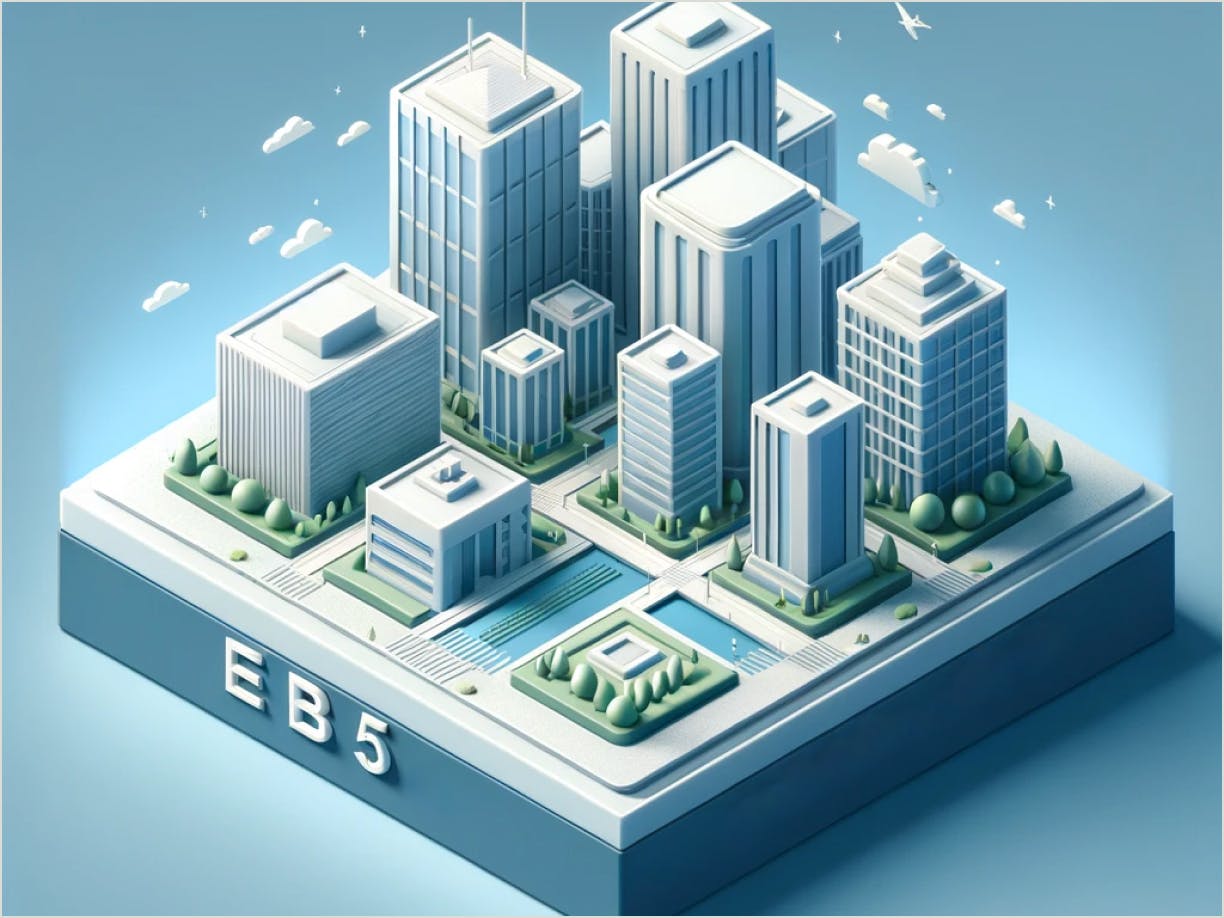EB-5 Regional Centers
The United States Citizenship and Immigration Services (USCIS) designates Regional Centers to participate in the Immigrant Investor Program. These Regional Centers have the responsibility of overseeing and certifying the activities related to raising EB-5 capital by the New Commercial Enterprise (NCE) and Job Creating Entity (JCE).

Clarifying the Regional Center’s Role and Relationships with Projects, and EB-5 Funds

An EB-5 Regional Center is a pivotal economic entity in the United States, which can take on either a public or private form. While its main purpose is to foster economic growth, it doesn't engage directly in raising EB-5 capital or carrying out job-creating activities. Instead, it primarily serves as a supervisor, responsible for overseeing the endeavors of the entities it sponsors.
Understanding the distinctions between the Regional Center, the Project (often referred to as the job-creating entity), and the EB-5 Fund (commonly known as the New Commercial Enterprise) can sometimes be perplexing for potential EB-5 investors and even some EB-5 attorneys.
The leadership of some Regional Centers also hold responsibilities related to the NCE and the JCE, so it's imperative to grasp that these entities are separate and distinct.
Having the same individuals of the Regional Center oversee both the project and EB-5 Fund's capital raising activities is argued to be streamlining management. An alternative perspective suggests that having identical leadership for the Regional Center, which supervises the NCE and JCE, might introduce the risk of a conflict of interest.
A clear understanding of these dynamics is essential to safeguard both your immigration benefits and your investment.
EB-5 Regional Center Definition & History

A regional center is an organization authorized and regulated by the USCIS to stimulate economic growth in designated regions.
The inception of the Regional Center program, originally known as the Immigrant Investor Pilot Program, was inspired by similar immigrant investor programs in other nations. This program was established by Congress in 1992, two years following the creation of the broader EB-5 visa program in 1990.
In 2012, twenty years later, Congress removed the “pilot” designation from the program's name and extended its authorization until 2015.
Subsequently, the Regional Center Program has seen several reauthorizations of varying durations, with the latest reauthorization, the Reform and Integrity Act of 2022 (RIA), imposing significant responsibilites on Regional Centers.
The Evolving Role of Regional Centers under the EB-5 Reform & Integrity Act of 2022

The EB-5 Reform and Integrity Act of 2022 (RIA) has ushered in a new era of responsibility for regional centers. With the overarching goal of bolstering program integrity and increasing transparency while curbing potential fraud and abuse, RIA has significantly amplified the demands placed on regional centers.
A thorough due diligence review is required to verify that the activities required to be performed as outlined in the Regional Center Policies and Procedures Manual have been performed and have been documented, in accordance with the regulations set forth by the USCIS and the Securities and Exchange Commission (SEC).
Regional Centers requirements include:
The RIA marks a transformative phase for Regional Centers, elevating their responsibilities. With a renewed commitment to compliance, anti-fraud measures, and transparency, Regional Centers are at the forefront of ensuring program integrity. The introduction of the EB-5 Integrity Fund, empowering the Department of Homeland Security (DHS) in their global investigations and fraud prevention efforts, underscores this commitment. RIA propels regional centers into a future of increased accountability, curbing fraud and abuse while they continue to fulfill their expanded roles.
Job Creation Advantages for Regional Center Investments
Direct EB-5 investments, that are limited to one investor, are subject to stricter job creation standards. Direct investments may only recognize “directly hired” persons, each job requiring corresponding W-2 forms for the employees.
On the other hand, regional centers offer much more advantageous calculations, offering greater flexibility in meeting job creation requirements.
Direct Jobs
These are positions directly generated by the job-creating enterprise, typically encompassing roles like managers, employees, or contractors within the company.
Indirect Jobs
Indirect jobs result from the EB-5 investment enterprise's activities but are not filled directly by the company's employees. They often arise within the supply chain or from increased economic activity in the region and can be linked to materials, equipment, and services required by the job-creating enterprise.
Induced Jobs
Induced jobs stem from increased economic activity driven by employees' expenditures. These jobs may include staff working in restaurants where construction workers dine, for instance.
NOTE: The RIA limits job count for indirect jobs at 90 percent on the total. Jobs resulting from construction activities lasting less than two years can only make up to 75 percent of the total job count.
NOTE: Direct jobs originating from construction activities lasting less than two years are eligible for consideration as a percentage of the job's duration divided by two years.
Why Over 95% of EB-5 Investors Prefer Regional Center Projects
Investors have the choice of either making their investment into the Regional Center Program or Direct Investment. There are compelling reasons why investors may find the regional center model to be a more streamlined and attractive option.
The Direct Investment Model and Investor Involvement
In the direct investment model, a single investor backs a project and plays an active role, often serving in managerial or advisory capacities for the business. In essence, direct investors must engage actively in the decision-making processes outlined in the EB-5 business plan.
The Regional Center Investment Model
In contrast, Regional Center investments unite multiple investors who acquire equity stakes in an EB-5 investment fund. This fund subsequently purchases equity in the job-creating entity (using the equity model) or provides capital to the job-creating entity through loans (employing the loan model).
Active vs. Passive Involvement
One of the key distinctions is that a Regional Center investment allows applicants to participate as passive investors through entities like limited partnerships or limited liability companies. This passive investment approach offers a significant advantage to EB-5 applicants who prefer not to actively manage a business.
Diverse Investment Opportunities
Regional Centers offer a broader range of investment options due to the pooling of investor capital. In contrast, the scope of direct investment opportunities is relatively limited, often encompassing areas such as franchises, motels, and retail stores.It's noteworthy that over 95% of EB-5 investments are directed toward regional center projects. This statistic underscores the popularity of Regional Centers and their appeal to investors seeking efficient pathways to an EB-5 visa.
Approval of Regional Center Does Not Imply Endorsement
As of April 4, 2023, the USCIS had granted approval to a total of 640 Regional Centers.
Prospective investors must understand that a USCIS approval of an EB-5 regional center should not be construed as an endorsement of the regional center or its compliance with EB-5 program regulations. USCIS approval does not guarantee a regional center's compliance with securities laws, nor does it eliminate investment risk.
Moreover, EB-5 investment opportunities sponsored by a regional center do not automatically gain approval solely because the regional center itself is approved. Each regional center is required to submit an I-956F “Application for Approval of an Investment in a Commercial Enterprise”, used to request approval for each specific investment, which undergoes a review and approval process by USCIS. Due to processing delays, investors typically file their I-526E "Immigrant Petition by Regional Center Investor" before receiving approval for an I-956F application. This underscores the critical importance of conducting thorough due diligence reviews.
At EB5 Diligence, we are committed to supporting this diligence. Our primary mission is to provide potential investors with comprehensive and independent EB-5 due diligence when evaluating regional center investment options. We ensure that investors have all the essential information to make well-informed decisions.
“Potential investors are encouraged to seek professional advice when making any investment decisions.”
The Economic Impact of Regional Centers in the U.S.

Sector Impact
Over the past decade, the EB-5 Regional Center Program has experienced a remarkable surge in activity and its economic influence. In 2008, the program attracted $321 million in investments. Fast forward to 2014-2015, and that figure had surged to an astonishing $11 billion. During this period, the capital influx from the program represented a significant 2% of the total foreign direct investment in the United States.

Industry Reach
Historically, regional centers mainly sponsored commercial real estate projects, but the industry as for various reasons, including the benefits of rural development and the opportunity to return investor capital quickly is leading to new industries taking advantage of the capital raising possibilities on offer by EB-5. A regional center's impact now extends to healthcare, education, renewable energy, senior living facilities, transportation, affordable housing, storage facilities, research facilities, architectural and engineering-related services, and of course, commercial real estate.

Opportunities
To discover more about our rigorous due diligence procedures for regional center projects, please visit our “Our Process” page.
The World of EB-5 Regional Center Investments
Within the diverse landscape of regional center investments, pinpointing a project that leads to a Green Card and financial success can be formidable. We at EB5Diligence excel at assisting with our comprehensive due diligence analysis.
Our independent evaluation equips potential investors with the knowledge needed to make informed decisions.